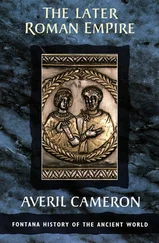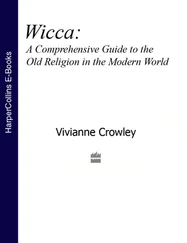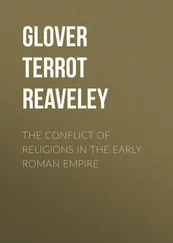Gods and humans, the history of a city like Pompeii is above all that of two communities living together, a precarious harmony guaranteed by the celebration of regular rituals, in temples, in the public square, in the streets, in houses or on graves. In a society thus organised and hierarchical due to sacrifices that were intended to express the superiority of the gods over men, to speak of the gods is, then, inevitably, to speak of men. To describe the cult of Jupiter is to evoke the Roman identity of the inhabitants, the public oaths, the patronage over the assemblies (Jupiter is the god of public oaths), that is, at the foot of the altar of the local capitol. To speak of Venus is to talk about civic harmony, about maritime navigation and the life of corporations, especially textile craftsmen; it is also, of course, to talk about love and eroticism in a Roman city. To speak of Bacchus is to conduct a sociological study of wine, from the cultivation of vines on the slopes of Vesuvius to the drunkenness of banquets, of which there are so many testimonies in Pompeii. To examine the cult of the Lares is to better understand the social and topographical organization of a Roman house, the involvement of the family in neighbourhood life. Explaining funeral practices means defining the grave not only as a testimony to the rank of the deceased, but also as a place of worship, adapted to a ritual separation between the dead and the living. Faced with the richness of religious expressions encountered in Pompeii, the essential observation is that no area of human activity was spared by religion. From birth to death, at work or in the theatre, in one’s city or on a journey, piety was a daily concern, maintained by gestures of reverence towards the gods, a greeting in passing by a temple, a few grains of incense on the family altar, a toast during the banquet and then, from time to time, the sacrifice of a chicken or a pig in the yard of the sanctuary or in the garden of the house. This interweaving of religion and human life is so thorough that the study of the testimonies of religious activity reveals a whole section of the functioning of Pompeian society, completing our knowledge of the history of the city.
Boivin, Nicole 2008. Material Cultures, Material Minds. The Impact of Things on Human Thought, Society, and Evolution. Cambridge: Cambridge University Press.
Bourdieu, Pierre 1984. Questions de sociologie. Paris: Minuit.
Boyce, George K. 1937. Corpus of the Lararia of Pompei . MAAR 14. Rome: American Academy.
Coralini, Antonella 2001. Hercules domesticus: Immagini di Ercole nelle case of the Vesuvian region (1st century B.C.-79 A.D.). Napoli: Electa.
Flower, Harriet 2017. The Dancing Lares and the Serpent in the Garden: Religion at the Roman Street Corner. Princeton: Princeton University Press.
Fröhlich, Thomas 1991. Lararien- und Fassadenbilder in den Vesuvstädten: Untersuchungen zur »volkstümlichen« pompejanischen Malerei . MDAI R Ergänzungsheft 32. Mainz: Verlag Philipp von Zabern. Reprint, Diss. Freiburg i.Br. 1989 (Strocka).
Hodske, Jürgen 2007. Mythologische Bildthemen in den Häusern Pompejis: Die Bedeutung der zentralen Mythenbilder für die Bewohner Pompejis. Ruhpolding: Rutzen.
Patzelt, Maik 2018. Über das Beten der Römer: Gebete im spätrepublikanischen und frühkaiserzeitlichen Rom als Ausdruck gelebter Religion. RGVV 73. Berlin: De Gruyter.
Sogliano, Antonio 1937. Pompei nel sviluppo storico. Pompei preromana (dale origini all’ 80 av. C.). Roma.
Thulin, Carl Olof 1968. Die etruskische Disziplin I–III . Darmstadt: Wiss. Buchgesellschaft. Repr. (Göteborgs högskolas årsskrift 11. 1905,5; 12. 1906,1; 15. 1909,1).
Van Andringa, William 2009. Daily Life of Gods and Men: Religious Life in the Cities of Vesuvius in Roman Times. BEFAR 337. Rome: Ecole française.
— 2013. Pompeii: mythology and history. Paris: CNRS editions.
— 2019. »Rituels pour les morts et culte des dieux à Pompéi.« Cahiers de la villa »Kerylos« 30 = Actes ddu XXIXe colloque de la villa Kerylos, 2018. 101–121.
— forthcoming. Words are not enough: Archaeology of Gesture and Ritual Knowledge in Roman Times.
— et al. (eds.) 2013. Archaeology and Religion: The Dionysian Shrine of St. Abbondio in Pompeii = Mélanges de l’École française de Rome—Antiquité [Online], 125–1. http://mefra.revues.org/1165.
Van Andringa, William; Duday, Henri; Lepetz, Sébastien 2013. Mourir à Pompéi: excavation of a funeral district of the Roman necropolis of Porta Nocera (2003–2007), vol. 2. Collection de l’Ecole française de Rome 468,2. Rome: Ecole française de Rome.
Sanctuaries – places of communication, knowledge and memory in Roman religion
Rubina Raja and Anna-Katharina Rieger
1 Sanctuaries – places for people and gods
Sanctuaries were a crucial part of human life in the Roman period across the Empire both in the sense that sanctuaries were visible and tangible spaces, in- and outside settlements, as well as spaces in which ritual practice that constituted and made religious life took place. 1Sanctuaries differed immensely in their physical appearances. There was no entirely set formula for how a sanctuary should look. Nonetheless the absolutely crucial feature in every sanctuary was the altar at which the offerings took place. These offerings constituted the essence of practicing religion and were the actions, which created contact between the gods and the mortals. 2However, sanctuaries were not spaces in which everyone would have had the same experiences and they were not even spaces into which everyone was allowed at any given point in time.
All too often sanctuaries are approached merely as physical spaces in which ritual practices took place. 3However, they were so much more than that. They were frameworks for experiences and places where the senses were stimulated. Sanctuaries in the Roman period were spaces where visitors had visual impressions, smelled, heard and sometimes tasted things. Sanctuaries framed, gave space and controlled religious practices. 4They gave a home to the gods and were elaborated in order to make the gods want to be there. 5Sanctuaries were spaces in which performances took place and rituals were acted out. They were living spaces for living people and their living gods. 6Therefore, sanctuaries, their surroundings and makers were in a constant dynamic process of mutually shaping each other. Sanctuaries shaped experiences, but experiences shaped people and enabled continuity or change in practices over time. Religion was therefore so to say lived in such spaces and the constant interaction between space and people would have had an impact on how religion was practiced and given shape over time. 7It was not a given that deities would want to live in a particular sanctuary. They would have to be offered a home and to accept that home. In attempts to bind the deity to sanctuaries epithets were given to the deities that could help tie them to one particular place. In the Roman period—as opposed to the earlier Classical periods—epithets became much more popular. 8
Sanctuaries, although often called public spaces, cannot be assumed to have been public at all times—and some most likely were not public at any point in time. Access to sanctuaries would have been controlled and monitored, which in turn would have impacted the experience of the visitors. Experiences would also have differed depending on the situation of the individual. Aspects such as occasion, rank, gender, power relations, societal standing and role in religious situations would have had an impact on the ways in which the individual would have perceived a visit to a sanctuary. 9
Читать дальше












